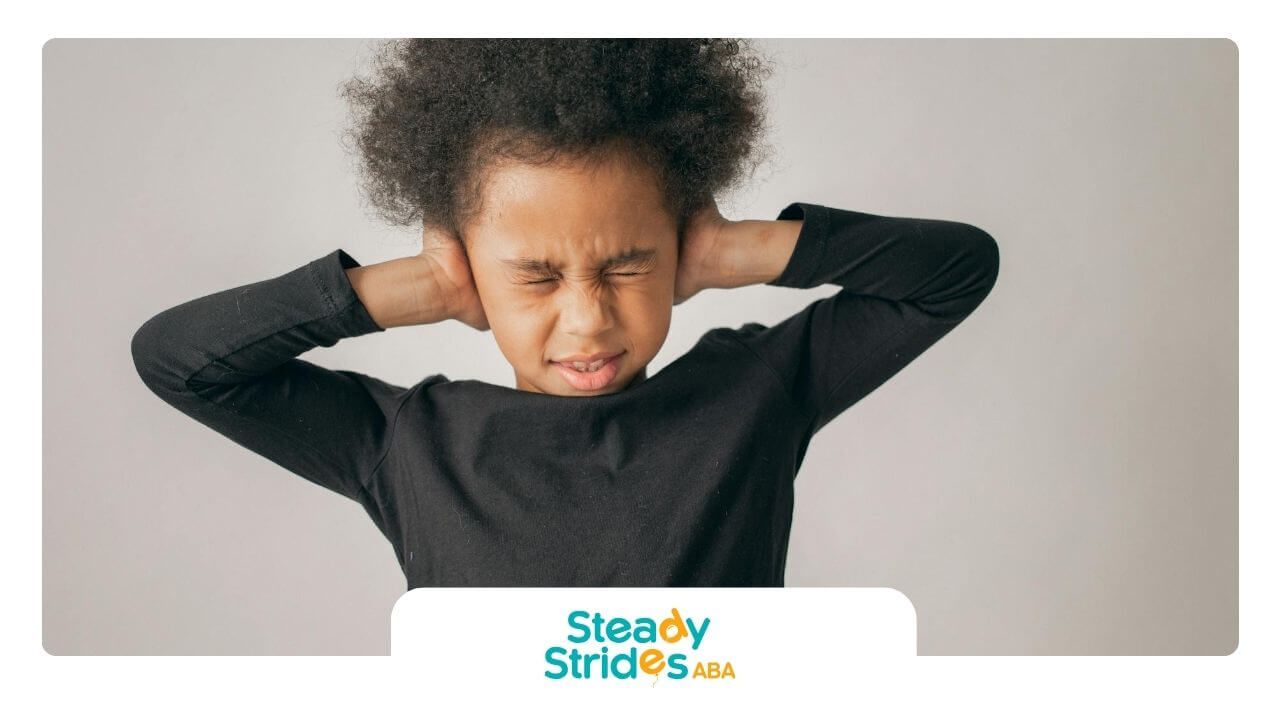Key Highlights
- ABA therapy sessions typically last 2 to 4 hours, but the weekly hours are more critical for success.
- The minimum hours for focused ABA therapy usually start around 10 hours per week, targeting specific goals.
- Comprehensive ABA therapy involves 30 to 40 hours weekly for broader skill development.
- A certified behavior analyst determines the right number of hours after a thorough assessment of your child’s needs.
- The recommended hours for your child on the autism spectrum can change over time based on their progress.
- Factors like age, therapy goals, and family schedules all influence the final ABA therapy plan.
Introduction
If your child is starting Applied Behavior Analysis (ABA) therapy, you likely have many questions. One of the most common is, "What is the minimum number of hours my child needs?" Understanding the recommendations for children with autism spectrum disorder is key to setting expectations and planning for your family. Since every ABA therapy plan is unique, the answer isn’t a simple one. This guide will help you understand how therapy hours are decided and what might be right for your child.
Overview of ABA Therapy and Minimum Hour Recommendations
ABA therapy is a highly personalized treatment for individuals with autism spectrum disorder. Instead of a one-size-fits-all approach, the hours of ABA therapy are tailored to fit your child’s specific needs, especially in early intervention programs. The science of behavior analysis helps guide these decisions to ensure the best possible results.
While there's no single magic number, research and practice guidelines provide a general framework. Generally, recommendations for ABA therapy start at a minimum of 10 hours per week. Let’s explore what that means and how those hours are determined.
Defining Applied Behavior Analysis (ABA) Therapy
Applied Behavior Analysis (ABA) is a therapy based on the science of learning and behavior. The main goal of this approach is to help individuals improve important skills like communication, social abilities, and daily living tasks. At the same time, it can help reduce behaviors that might create challenges.
The core of ABA therapy involves breaking down complex goals into smaller, more manageable steps. During therapy sessions, a therapist uses proven techniques, including positive reinforcement, to teach these new skills. When a child demonstrates a desired behavior, they receive a reward, which encourages them to use that skill again in the future.
This type of therapy is not confined to a clinic. ABA can be applied in various settings, such as at home, school, or in the community. This flexibility helps your child apply what they learn in therapy to real-world situations, making the changes more meaningful and lasting.
National Guidelines for Minimum ABA Therapy Hours
While there isn't a single, standard duration for every child, national guidelines offer a helpful starting point for recommended hours. These guidelines are based on research and are designed to help your child make significant progress. ABA therapy is generally categorized into two models based on intensity.
A focused ABA plan targets a small number of specific goals, while a comprehensive plan addresses a much broader range of developmental areas. A Board Certified Behavior Analyst (BCBA) will recommend the appropriate model after completing a detailed assessment of your child’s needs.
The number of therapy hours is always personalized. Here’s a general look at what the guidelines suggest:
| Treatment Type | Recommended Hours/Week | Primary Objectives |
|---|---|---|
| Focused ABA Treatment | 10–25 hours | Addresses specific goals, such as improving social skills or reducing minor challenging behaviors. |
| Comprehensive ABA Treatment | 26–40 hours | Covers a wide range of developmental skills, including communication, social interaction, and self-care. |
Minimum Weekly ABA Therapy Hours Recommended in the United States
In the United States, the recommended number of ABA therapy hours generally ranges from 10 to 40 hours per week. The minimum hours of ABA typically fall within the "focused treatment" model, which is between 10 and 25 hours weekly. This approach is often suitable for children who need to work on a limited number of specific skills.
In contrast, an intensive or "comprehensive" therapy plan involves 30 to 40 hours of therapy per week. This level of support is common for young children, especially those in early intervention programs, as it addresses multiple areas of development at once. More hours provide more opportunities to practice and build foundational skills.
Ultimately, the minimum hours are a starting point. A qualified professional will determine if a focused or comprehensive plan is the best fit for your child. The goal is always to provide enough support for them to make meaningful progress without causing fatigue.
How Experts Determine the Starting Hours for ABA Therapy
The number of ABA therapy hours your child receives is never a random decision. A Board Certified Behavior Analyst (BCBA) carefully determines the starting hours of therapy after getting to know your child and their specific needs. This process is designed to create a personalized plan that sets your child up for success from day one.
Several key steps are involved in this decision-making process. The BCBA will conduct an in-depth assessment, create an individualized plan, and consider important factors like your child's age and developmental stage.
Assessment and Evaluation Processes for ABA Therapy Hours
The first step in determining the right number of therapy hours is a comprehensive assessment. An ABA therapist, guided by a BCBA, will evaluate your child's current skills, strengths, and challenges. This evaluation looks at areas like communication, social skills, self-care, and any challenging behaviors.
Based on this initial assessment, the BCBA will recommend a specific number of weekly therapy hours. This recommendation is based on the goals that need to be addressed and the intensity of support required to meet them. For example, a child with significant developmental needs may be recommended for more hours than a child with only a few specific behavioral goals.
The evaluation process doesn't stop there. Ongoing assessment is a crucial part of ABA therapy. The therapy team will continuously track your child’s progress and collect data. This allows them to adjust the therapy hours as your child learns new skills and meets their goals.
Individualizing Therapy Plans for Children with Autism
One of the greatest strengths of ABA therapy is that it is highly individualized. No two children on the autism spectrum are alike, so no two treatment plans should be either. Behavior analysts create a flexible treatment plan that is tailored to your child's unique personality, strengths, and individual needs.
This personalized approach means the therapy focuses on goals that are most meaningful for your child and family. Do you want to improve your child's ability to communicate their needs? Or perhaps the focus is on developing social skills to make friends? The treatment plan will be built around these specific objectives.
Your family’s input is a vital part of this process. The BCBA will work with you to understand your goals and priorities. This collaborative effort ensures that the therapy plan is not only effective but also practical and supportive of your family’s lifestyle.
The Role of Age, Diagnosis, and Developmental Needs
A child’s age, diagnosis, and overall developmental needs are key factors that influence the recommended number of therapy hours. The needs of a toddler with autism spectrum disorder are very different from those of a teenager, and the therapy plan will reflect that.
For younger children, especially those between the ages of 2 and 4, early and intensive intervention often yields the best results. Their brains are incredibly adaptable, making it an ideal time to build foundational skills. As a result, younger children might be recommended for a higher number of therapy hours.
Several factors are considered when looking at your child’s needs:
- Child's Age: Younger children often benefit from more intensive therapy, while older children may need fewer hours focused on specific skills.
- Severity of Symptoms: Children with more significant developmental delays or challenging behaviors may require more hours to make progress.
- Stamina and Attention: A child's ability to focus helps determine the length of individual sessions, which in turn affects the weekly schedule.
Factors Influencing Minimum ABA Therapy Hours
Once an initial assessment is complete, a variety of factors come into play to fine-tune the hours of ABA therapy. The right amount of time for one individual child may not be right for another. These elements ensure the therapy plan is both effective and practical for your family.
From the specific goals of the therapy to logistical considerations like your family's schedule and insurance coverage, many variables help shape the final recommendation. Understanding these factors can help you feel more prepared and involved in the planning process.
Child’s Behavioral Goals and Therapy Objectives
The specific therapy goals set for your child are a primary driver of how many therapy hours are recommended. A plan designed to teach a few targeted social skills will likely require fewer hours than one aimed at addressing significant language delays and reducing severe maladaptive behaviors.
Behavior analysis focuses on creating clear, measurable objectives. For example, goals might include increasing positive behaviors like responding to their name or sharing toys, while decreasing challenging behaviors like aggression. The more ambitious and broad the goals, the more time will be needed to work toward them effectively.
As your child’s progress is tracked, these goals will be updated. If your child masters a skill quickly, the team might move on to a new goal. If progress is slow, the therapy plan might be adjusted. This constant evaluation ensures the therapy hours always align with your child's current objectives.
Family Schedule, Insurance Coverage, and Accessibility
Beyond clinical needs, practical considerations play a significant role in determining the final number of therapy hours. Your family’s daily life and resources are important factors that autism service providers take into account to create a sustainable plan.
For example, your family schedule must be able to accommodate the therapy sessions. Accessibility to services, including your proximity to a clinic or the availability of in-home therapists, can also influence the plan. Finally, insurance coverage is a major consideration for many families. Most providers work to create a treatment plan that is considered a medical necessity to help secure authorization from your insurance company.
Here are a few key logistical factors:
- Family Schedule: The therapy hours must fit into your family's routine without causing excessive strain.
- Insurance Coverage: The authorized hours are often based on what insurance deems medically necessary according to the treatment plan.
- Availability of Therapists: The number of qualified ABA therapists in your area can impact scheduling options.
Risks and Considerations of Attending Only Minimum ABA Hours
While a focused plan with fewer hours can be effective for specific goals, there are potential risks to consider. For children with more extensive needs, attending only the minimum number of hours may slow down their ability to make meaningful progress.
One of the main challenges is consistency. With fewer hours, there are fewer opportunities to practice new skills and receive positive reinforcement. This can make it harder for your child to generalize what they learn in therapy to their daily life at home or school. A child who needs broad support might not get the intensity required to close developmental gaps.
In contrast, comprehensive ABA therapy provides the immersive environment some children need to thrive. It’s important to have an open conversation with your BCBA about the potential downsides of fewer hours and ensure the recommended plan gives your child the best chance for success.
Conclusion
In conclusion, understanding the minimum hours for ABA therapy is crucial for parents and caregivers navigating this essential treatment for children with autism. By familiarizing yourself with national guidelines and recognizing the individual needs of your child, you can make informed decisions that best support their progress. Each child's journey is unique, and by considering factors such as behavioral goals and family dynamics, you can tailor an effective therapy plan. Remember, while the minimum hours might be a starting point, investing in additional support can lead to greater success in achieving developmental milestones. If you’re seeking personalized guidance, don’t hesitate to reach out for a free consultation!
At Steady Strides ABA, we recognize that each child’s needs are unique, and creating a personalized therapy plan that aligns with your child’s developmental goals is essential. Understanding the minimum hours for ABA therapy in Texas and New Mexico is just the beginning. With our expertise, we can help you navigate therapy hours, optimize treatment plans, and ensure your child’s continued growth and success.
Don't hesitate to reach out for a free consultation. Contact us today!
Frequently Asked Questions
Can ABA therapy be effective if only the minimum hours are attended?
Yes, ABA therapy with minimum hours can be effective, especially when targeting a few specific goals. This focused approach can help a child make meaningful progress in certain areas. However, research often shows that more intensive therapy sessions lead to broader and more significant long-term gains, resulting in better outcomes.
Does insurance usually cover the minimum ABA therapy hours?
Most insurance plans cover ABA therapy when it is deemed medically necessary. Autism service providers will submit a detailed treatment plan justifying the recommended therapy hours. While insurance coverage varies, a well-documented plan showing the need for at least the minimum hours is often approved, but it's always best to check with your specific provider.
What does a typical week look like for a child receiving minimum ABA therapy hours?
A typical week with minimum ABA therapy hours would involve several focused ABA sessions, each lasting a few hours. These sessions would target specific therapy goals, such as improving communication or social skills. Therapists would work to integrate these skills into the child’s daily life, and the child's progress would be closely monitored.
SOURCE:
hhttps://www.reddit.com/r/ABA/comments/15qinfe/bcba_recommended_40_hrs_week_aba_therapy/
https://pmc.ncbi.nlm.nih.gov/articles/PMC11219665/
https://www.cdc.gov/autism/treatment/index.html
https://my.clevelandclinic.org/health/diseases/14814-developmental-delay-in-children
https://www.cdc.gov/child-development/about/developmental-disability-basics.html













